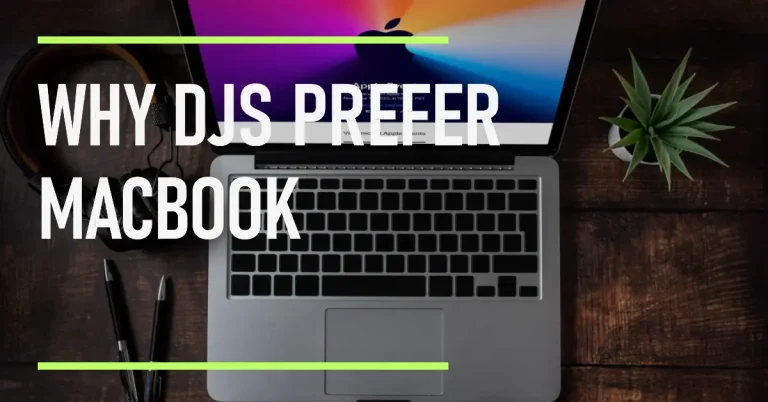What are DJs Doing With the Knobs? 2023
Have you ever seen a DJ live? You probably noticed that the DJ is doing something with the knob, but the question arises: what are DJs doing with the knobs? DJs turn knobs to adjust the various settings such as EQ (Equalization) of the song, changing the volume, changing the effects, creating dynamic mixes and engaging the audience to keep them dancing and enjoying.
In this article, I will elaborate on what DJs are doing with the knobs? How do they use knobs? Why do DJs pretend to turn knobs? And what are things that we can modify in music by using knobs?
What are DJs Doing With the Knobs?

Knobs play a vital role in live performance; by the use of Knobs, DJs can change or mix the different types of tracks. Without a knob, DJ is helpless. For example, a DJ is mixing track A to track B, and then DJ have to match the beats of both songs, so combining the music and balancing the sound effects is only done by knobs.
Syncing is also happening these days. Different software allows you to sync the sounds. Mixing electronic music requires skills. For example, you have done the beat matching of the songs A and B. Now you have the outro of the songs A and B. Ultimately, you have the two baselines, two types of higher frequencies, and two mid-ranges. These three things play simultaneously and can only be set using knobs.
The sound results will be overloaded if you play both songs without EQ.
To become a good DJ, you have to learn the skill of equalizing and twisting the knob.
What is The Use of Knobs on a Mixer?
There are many knobs in one mixer for different purposes such as gain/trim, high, mid & bass trim, effects, headphones, booth & master output, cue, filter, and faders.

The mixer has knobs for trimming (high, mid and bass). All these three things have a different range of frequencies. For instance, the low-end and bass sounds range between 50 to 250 Hz, mids have 500 to 1KHz and high ranges between 2 to 4 Kilo Hz.
You must cut out the bass when the track comes in to avoid low output sound, or the sound system will be overloaded, or the sounds will become “muddy”. Muddy means all the low-frequency sounds travel to compete with each other for the same space.
FX Knobs and Button
You probably know why DJs use knobs, so let’s talk about the effects. Equalizers control the impact and bring joy into the DJ mix.
The knob controls the intense DJ mix. You have probably seen in the live performance DJs twisting their hands while fixing the FX knob.
However, there are two most commonly used FX:
High pass filter
Higher the frequencies but cut the lower ends
Low pass filter
It is the reverse of a high pass filter, with higher frequencies but cut upper ends.
The mixer has many effects, such as flanger, reverb, and echo. Flanger is the most liked one, which is used to create (high bass) joy in mixing the tracks.
Why do DJs Pretend to Turn Knobs?
DJs are trying to mix the two tracks. When the two tracks are mixed, the output sound has unbalanced beats. The DJ has to match the moments of both of the songs. Especially in live performances, DJs pretend to turn knobs to equalize and balance the sounds. DJs have to adjust the various parameters, such as volume and effects. These adjustments help a DJ to manipulate the sound in real-time.
It depends on DJs that for which purpose DJs are pretending to turn knobs such as:
- To change the style of the music
- Pretend to practice the equalization
- Or just doing fake turning of knobs
Why Do DJs Tap on Mixers?
On the mixer, there is a cue button. DJs usually tap on the cue button because they do it just before the music starts, ready to bash the dance floor with tremendous music.

The DJ has to know when the cue button has to be tapped and determine the perfect timing of the beat if it comes, so the DJ has to tap on the cue button. Cue tapping also requires practice. It is sort of a game in which the DJ has to feel the perfect timing of the beat.
Taping is used to line up the tracks and release the one shot of hot cues. DJs also bring Volume Fader, which is to add one more beat in a while playing the already mixed song.
Conclusion
Knob plays an essential role in adjusting different things such as equalization, mixing beats, and matching the frequencies. DJs tap on the mixer to add more to the current playing songs. In the mixer, DJ sometimes pretends to do twisting of the knobs. In the end, I have discussed what are DJs doing with the knobs? Why are DJs taping on knobs and EQ (equalization) of the tracks?
FAQs
Having good skills in EQing can not only enhance your mixes but also save you from bad mixes. It’s another tool a DJ has up his sleeve to craft the perfect mix. Get familiar and comfortable adjusting EQ’s as a part of your DJ arsenal and you’ll enjoy the benefits of smoother and better sounding mixes
DJs have to engage the audience. They are pretending to do the knob like they are doing different mixes. There are many reasons for twisting the knobs on the mixer. Sometimes, touch the cue button to add a song to a current playing music. That’s why DJs touch the fixer like they are on a fire.
One of the core skills any new DJ needs to master is correctly EQing when mixing. A solid understanding of utilising EQ will take your mixing to the next level.







